When it comes to versatility, there’s none like the adaptable wandering Jews! Check all different Types of Wandering Jew Plants in this detailed article!
Wandering Jew Plant comprises various species in the Tradescantia genus. As the plant is adaptable to both indoor and outdoor conditions, it doesn’t matter if you are planning to have it as ground cover, in hanging baskets, or in containers; it’ll do equally well! Also, do you know you can grow wandering jew in the complete shade, as well as in full sunlight? In full sun, it looks more colorful. Whereas, shade gives its leaves a greenish hue. Here are the Types of Wandering Jew Plants you should consider growing!
Have a look at the plants you can start with just one cutting and a glass of water here
1. Tradescantia fluminensis

It’s a popular indoor houseplant, which is also used as ground cover. Its white flowers are triangular and formed by three petals and look glorious attached to fleshy stems with oval-shaped leaves that are glossy and deep green.
Check out our article on colorful houseplants here!
2. Tradescantia zebrina
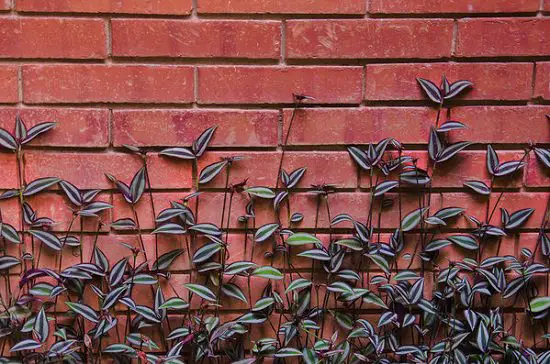
The variegated leaves resemble the stripes of the zebra, hence the name! The purplish-green foliage has a silver outer edge and white stripes running down lengthwise. It grows low to a height of 6-12 inches, and that’s why it can be grown as ground cover. It is one of the best types of wandering jew plants on the list.
3. Tradescantia pallida
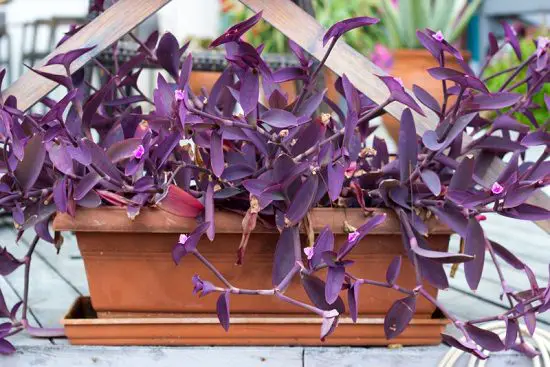
It also goes by the name “Purple Heart” and is native to Mexico. Deep purple foliage, adorned with light purplish-pink flowers, looks marvelous and is the reason that it’s one of the most popular types of wandering jew plants! Apart from growing it as a striking ground cover, you can also have it in hanging baskets.
To know about more purple houseplants, click here!
4. Tradescantia blossfeldiana
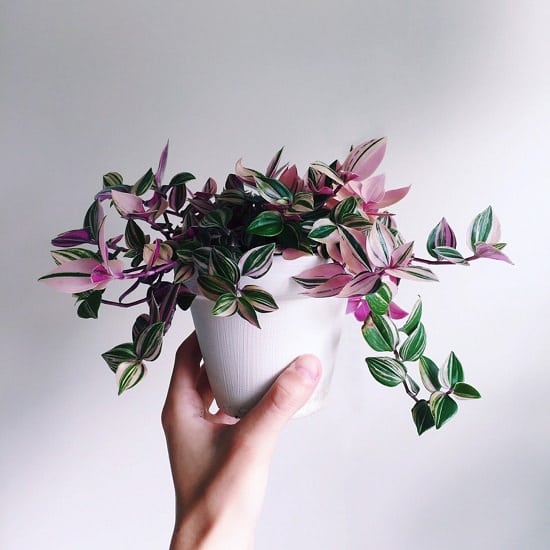
Commonly known as the ‘Inch plant,’ it’s also referred to as Tradescantia cerinthoidebs. The thick green leaves have a fuzzy texture and a purple hue on the underside. You can easily propagate it from the cuttings, both in soil and water, once it gets growing. It bears delightful clusters of blue, purple, white, or rose pink flowers, making it one of the best types of wandering jew plants on the list.
5. Tradescantia Sillamontana
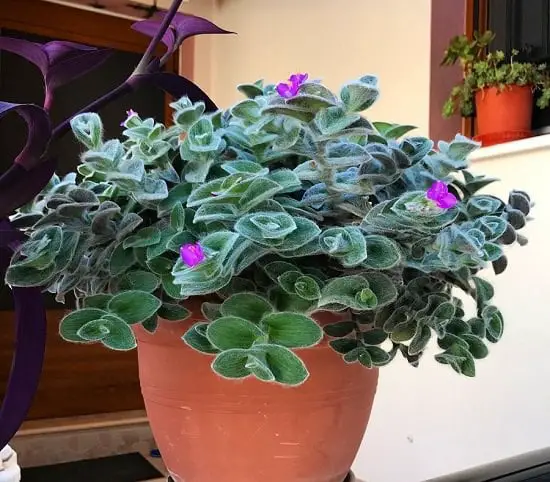
If precise geometric patterns are your thing, then you’ll love it because of its foliage. Growing from a thick succulent stem, the leaves are around two inches long and covered entirely in white hair. Magneta flower protrudes from the terminal end of the stem in summers.
6. Tradescantia spathacea
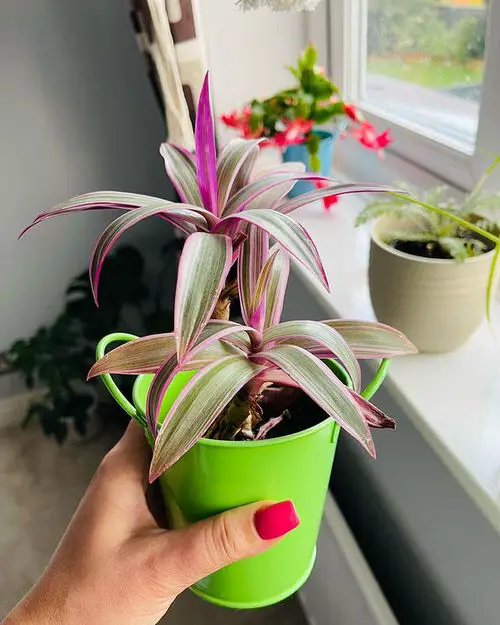
Known as Moses-in-a-basket, Oyster plant, or Boat lily, it is a sub-succulent herb from southern Mexico, Guatemala, and Belize. It grows in 6-12 inches long rosette and sword-like, narrow, and spiral-shaped dark green leaves, with purple bottom sides. The white flowers are enclosed with boat-like purple bracts, hence the name.
7. Tradescantia virginiana
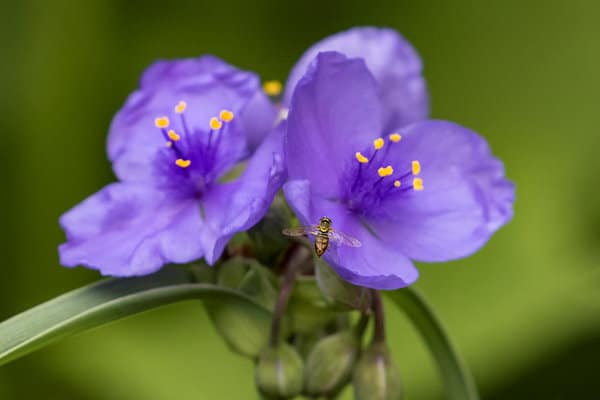
Commonly known as the spider lily, it is a herbaceous perennial from the Commelinaceae family. The plant produces violet-purple to blue, three-petaled flowers, with yellow stamens and dark green arching leaves. You can grow this one of the most popular types of wandering jew plants under full to partial shade.
8. Tradescantia longipes
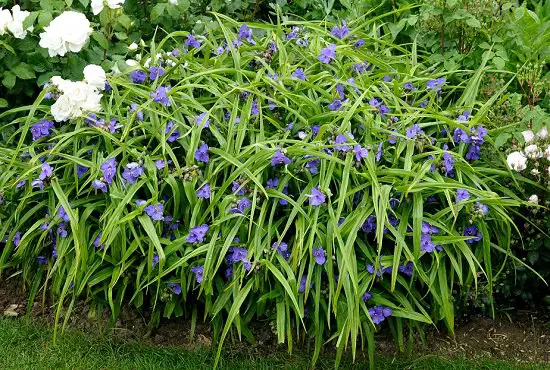
Adorn your garden by growing beautiful, purple-blue flowers of tradescantia longipes or spiderwort. It is native to Southern Missouri and northern Arkansas from the family Commelinaceae. Grow these three-petaled flowers for rock or naturalize gardens, in partial shade, by using well-drained, moist, acidic soil, making it one of the most popular types of wandering jew plants on the list!
Check out our article on indoor rock garden ideas here!
Wandering Jew Plant Care Tips
- Grow a wandering jew plant in bright, indirect light or expose it to full sun, which it won’t mind either. Just keep in mind that low light can fade the markings on leaves.
- Water the plant directly around the roots, avoiding the crown, as it can result in rot.
- The plant prefers slightly moist soil, so maintain the right watering schedule.
- Use an all-purpose, water-soluble fertilizer, once a month, during the growing period.



dO YOU NEED TO BRING A POTTED PLANT INDOORS DURING THE WINTER MONTHS?
Yes
Depends on the plant and where you live. Do research on the specific plant.
Sooooo number 4…. Is not a blossefeldiana. It’s a flumensis. …. You posted a tri-color-mundula variegata……. Not a nanouk. A nanouk is a blossefeldiana centerthoides